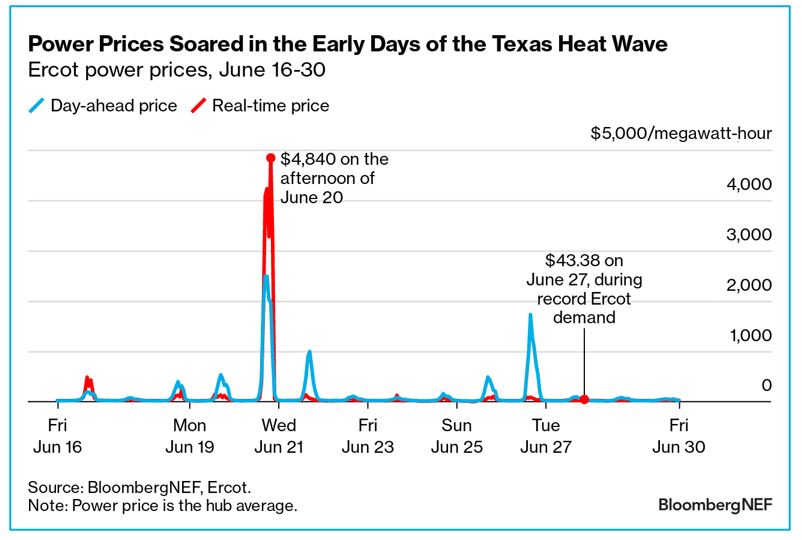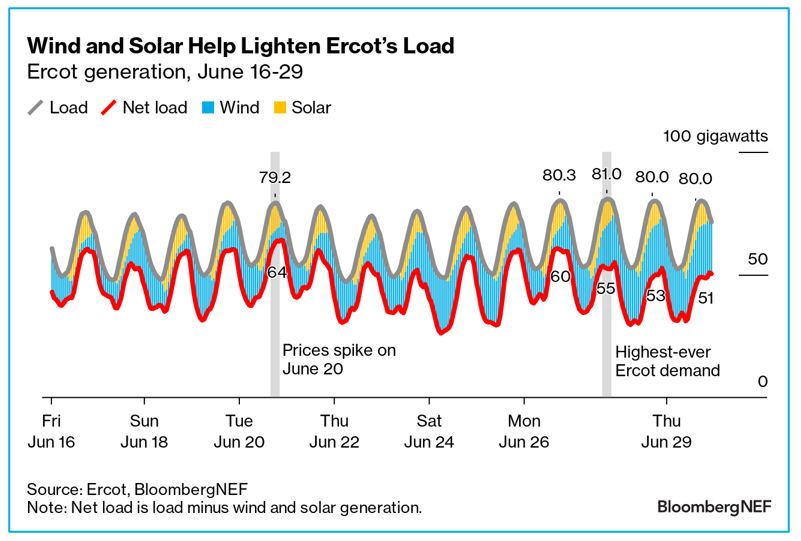By Nathalie Limandibhratha, US Power Associate, BloombergNEF
As Texas continues to cook under an unforgiving heat wave – and as Texans crank up the air conditioning – power-demand records in the state have fallen like dominoes. Yet after a brief spike on June 20, power prices stayed relatively modest, thanks to wind and solar generation picking up much of the load.
Demand in the Electric Reliability Council of Texas (Ercot) power market, which covers the majority of the state, has been smashing records right and left. On June 26, demand reached 80.3 gigawatts, topping the 80.1-gigawatt record set in July 2022.
The new record was smashed the very next day, when demand hit an eye-popping 81 gigawatts.
Texas power prices are notoriously volatile when the balance between supply and demand is tight. Real-time prices on June 20 reached nearly $5,000 per megawatt-hour, and the value of electricity traded on that day exceeded $1 billion.

Given that power demand on June 20 peaked at 79.2GW, the days of above-80-gigawatt demand days that marked the following week could well have brought further power-price fireworks.
In fact, prices stayed relatively modest, despite the record demand. Real-time prices on June 27 peaked $43.38 per megawatt-hour – less than 1% of the real-time price eight days before, despite higher demand. Day-ahead prices, too, were significantly lower than their June 20 counterparts.
The relatively cool price outlook in the face of bullish demand was the result of high expectations for wind generation, which hit 20.3GW at 6 p.m. on June 28, when power demand was peaking. By contrast, wind output was less than a quarter of that amount at the equivalent time on June 20.

Strong renewable generation, particularly wind, offers much-needed relief during periods of elevated demand. The key factor in determining price is not demand but net load, which is demand minus wind and solar output. Net load on June 20 was 64 gigawatts, when prices hit $4,840 per megawatt-hour. On June 27, when power demand was at an all-time high, net load was only 55 gigawatts.
Two days later, net load had fallen to 51 gigawatts, while demand remained near its zenith. In other words, wind and solar had relieved more than a third of Ercot’s demand load.
By taking strain off the grid, renewables are helping keep a lid on Texas’s power prices, for now.






